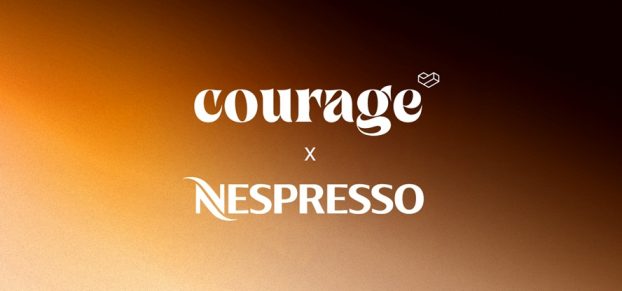The Kleenex of mutual funds. Ask Randy Van Der Starren, vice-president of marketing for Toronto-based AGF Management, to sum up his vision for the company, and that’s the answer you’ll likely get.
No, he’s not suggesting that it’s cheap, disposable and easily crumpled. Rather, the point is that he would like to see the AGF name acquire the same kind of stature that Kleenex enjoys: an easily recognized, widely trusted brand that defines and epitomizes the entire category.
Van Der Starren is scarcely the only mutual funds marketer whose thoughts turn frequently to packaged goods such as Kleenex. As competition in this category has increased over the last several years, many fund companies have begun borrowing brand-marketing strategies from the wonderful world of consumer products.
With so many mutual fund providers out there, and so little to distinguish their offerings, one of the prevailing questions in the business these days is: How best to establish a brand that investors will recognize and trust?
So far, anyway, no one’s claiming to have found the definitive answer – or to have figured out the right balance between conventional advertising and more non-traditional brand-building methods.
‘The environment for this industry is insanity,’ says Van Der Starren. Canadians, he notes, currently have their choice of more than 2,000 mutual funds. And while the level of advertising activity has dropped back from the dizzy heights it reached two or three years ago, it’s still pretty intense.
The fund category is, in short, a difficult place to stand out – especially when one considers that there’s not much, on the surface, to differentiate the top 10 companies. All, says Van Der Starren, can boast good products with solid performance records, reliable back office systems, and so on – the essentials that every investor is looking for. ‘We all have a pretty good reputation across the board,’ he says.
So what else does that leave the fund company that’s looking to make its mark?
‘There’s more to this whole selling thing than great performance,’ says Van Der Starren. To outshine the competition, he argues, mutual fund providers must do what packaged goods companies have always done – and what companies in other categories have invariably ended up doing once saturation has been reached: namely convince customers to choose a brand over a product.
‘The brand aspect in this category is no different from any other,’ he says. ‘It’s the one sustainable advantage we have.’
Part of AGF’s branding strategy, Van Der Starren says, has been to move away from the hard and heavy seasonal advertising that was standard practice a few years ago, and focus instead on creating a year-round presence for the brand.
‘There’s no such thing as an intermittent brand,’ he says. ‘We can’t pop in at RRSP season and then disappear.’
Brands shouldn’t just advertise when the market is healthy, either. It’s just as important, if not more so, to be visible when times aren’t so good, Van Der Starren says.
When the fund market tanked in October of 1998, he notes, some companies cut back on their advertising. AGF did the opposite. ‘We became more vocal and more out there, simply because that’s when you really need your friends.’
Mutual fund providers need to learn the fundamentals of brand advertising, Van Der Starren says. Many still succumb to the temptation to cram loads of information into their ads. Even AGF, he’s quick to admit, has been guilty of this in the past.
‘The mistake many of us make is to say, ‘Hey, we’ve got 30 seconds – let’s use each and every one of them to sell a mutual fund.”
The brand identity that AGF strives to build is one of humorous empathy. The advertising tagline ‘What are you doing after work?’ – now in its fourth year – is intended to intrigue rather than to sell, says Van Der Starren. ‘We leave the hard sell to the advisory network.’
In a bid to move beyond traditional brand-building vehicles, the company recently launched Moneyworld, a half-hour television program on the specialty network Prime.
The concept, Van Der Starren says, is essentially ‘MediaTelevision meets CNN.’ Each 30-minute installment of Moneyworld focuses on a single industry, offering financial snapshots and commentary.
While the show is sponsored by AGF, and all commercial breaks produced by the company, the content is as far removed from an infomercial as possible, he says. Sometimes, in fact, the opinions voiced by commentators on the show run counter to AGF’s own beliefs.
This can generate some heat from the company’s advisory network, Van Der Starren says. But to present only one side of an issue would be insulting to investors. ‘We don’t ever want to be seen as a company that wants to dupe people.’
For Fidelity Investments Canada, ’empathy’ is the watchword. All branding efforts are intended to convey the image of a company that cares, says Brian Henderson, Fidelity’s vice-president of marketing and e-business.
The tone and message of the company’s newest campaign – ‘You have a lot of tough decisions to make in life. Surprisingly, choosing a mutual fund company can be an easy one’ – have been crafted with an eye to reinforcing its empathetic nature, Henderson says. The ads are also meant to show that Fidelity has the kind of strength and longevity that instills trust.
According to Henderson, Fidelity was one of the first fund companies that tried to establish a year-round advertising presence, rather than spending the lion’s share of its budget during RRSP season.
Continuity of messaging at all levels is critical to successful branding, he argues. That means all of Fidelity’s communications activities – from its Web presence, to its interaction with customers, to its relationship with the sales force – must support that ‘caring company’ image.
‘Every point of contact has to go back to the brand,’ he says.
One of the factors rendering the category so challenging at present is the sheer number of players, Henderson says. That, however, is likely to change as consolidation takes place in the industry. ‘A lot of mid-tier players just won’t exist anymore,’ he predicts.
While that may spell fewer competitors in the category, it also means that those remaining will have bigger ad budgets.
Elizabeth Hoyle, vice-president of advertising with Trimark Canada, voices a certain skepticism when the subject of branding in the mutual fund business arises. Many in the industry, she suggests, approach it in too superficial a manner.
At Trimark, Hoyle says, the emphasis is on what she calls ‘character-building’ – and the goal is to make a connection with customers.
Last year, Trimark’s advertising focused on its method of investing. This year’s television campaign, by contrast, employs metaphorical imagery to convey something of the company’s character.
Each of the new spots features ‘surprises’ found in our natural world. One, for example, depicts a nasty storm (a representation, perhaps, of today’s world markets), which clears to reveal a sudden calm.
The new tagline, ‘The way there,’ underlines Trimark’s ability to provide valuable expertise in good times and bad, Hoyle says.
More and more, she adds, the company is moving toward a year-round advertising strategy. Sponsorship deals, particularly in the arts, are also crucial to Trimark’s character-building efforts.
‘It’s [about] long-term gain,’ Hoyle explains. ‘We’re not spending just to keep this quarter up.’
In the end, it takes far more than just advertising to build character. Delivering the promised expertise to each and every customer is ultimately what makes or breaks a fund company, she says. And that philosophy must permeate the entire organization.
‘We’re working with our reps to build a wonderful client experience,’ Hoyle says. ‘Everybody has to be on board.’
Also in this report:
– Great creative goes a long way p.B13
– Investors Group touting tailored solutions p.B14























